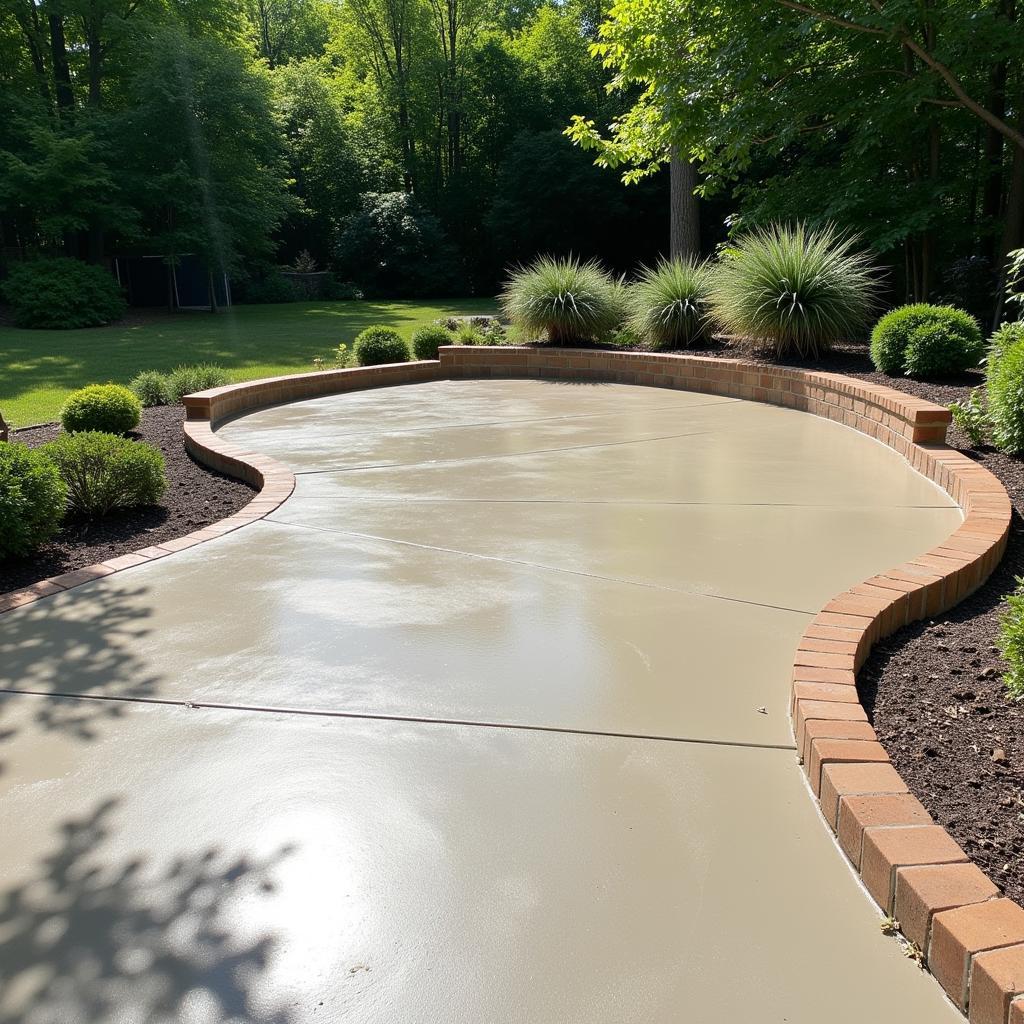Matching concrete color can be a tricky task, whether you’re patching a driveway, extending a patio, or building a new concrete structure. Achieving a seamless and aesthetically pleasing result requires careful consideration of several factors. This guide provides expert advice to help you navigate the process and achieve the perfect concrete color match.
Understanding Concrete Color Variation
Concrete isn’t a single, uniform color. It’s influenced by the ingredients used, the curing process, and environmental factors. Variations in cement color, aggregate type and size, water content, and even the weather can affect the final concrete color. Understanding these variables is crucial for successful color matching.
Factors Affecting Concrete Color
- Cement Color: Gray is the most common cement color, but white cement is also available, offering a brighter base for colored concrete.
- Aggregates: The size, color, and type of aggregates (sand, gravel, crushed stone) significantly impact the overall concrete color.
- Water-Cement Ratio: More water can lead to a lighter, less vibrant color.
- Curing Conditions: Temperature and humidity during curing affect hydration and color development.
Methods for Matching Concrete Color
There are several methods for matching concrete color, each with its own advantages and disadvantages. Choosing the right approach depends on the project’s size and the level of precision required.
Integral Color
Adding pigments directly to the concrete mix is the most common method for coloring new concrete. This creates a uniform color throughout the entire structure. what colors match dark gray can help you find complementary hues for a cohesive design.
Dry-Shake Color Hardeners
Dry-shake color hardeners are applied to the concrete surface during the finishing process. They provide a durable, wear-resistant surface with enhanced color.
Concrete Stains
Concrete stains react chemically with the concrete, creating a permanent color that won’t chip or peel. Stains are available in a wide range of colors and can be used to achieve a variegated or mottled effect.
Concrete Dyes
Dyes penetrate the concrete surface, offering a translucent color that enhances the natural variations in the concrete.
Tips for Successful Concrete Color Matching
- Start with a Sample: Always create a small test batch to ensure the color meets your expectations.
- Consider Lighting: Lighting conditions can significantly affect how the concrete color appears. View the sample in natural and artificial light.
- Work with a Professional: For complex projects or challenging color matches, consult a concrete professional. They can provide expert advice and ensure optimal results.
“Matching concrete color is a science as much as it is an art,” says renowned color expert, Amelia Hues. “Understanding the interplay of materials and environmental factors is key to achieving a harmonious and lasting result.”
How to Match Existing Concrete Color
Matching existing concrete can be more challenging, especially if the original mix details are unknown.
Analyze the Existing Concrete
Carefully examine the existing concrete to determine its color, texture, and finish. what color flooring goes with white cabinets can offer insights into coordinating different materials and colors.
Gather Samples
Collect small samples of the existing concrete for comparison.
Work with a Concrete Supplier
A concrete supplier can help analyze the samples and recommend a suitable mix design. They can also create custom color blends to match the existing concrete as closely as possible.
“Don’t underestimate the importance of proper surface preparation,” adds Ms. Hues. “A clean, properly prepared surface is essential for achieving a uniform and durable color.”
Conclusion
Matching concrete color requires careful planning and execution. By understanding the factors that affect concrete color and choosing the right matching method, you can achieve a beautiful and long-lasting result. Consider these tips and consult with a professional for the perfect concrete color match. can you mix colors in the washer offers practical advice on color mixing, albeit in a different context. Matching concrete color adds significant value and aesthetic appeal to any project.
FAQ
-
What is the best method for coloring new concrete?
Integral color is generally the most effective method for coloring new concrete. -
How can I match the color of existing concrete?
Work with a concrete supplier who can analyze the existing concrete and recommend a suitable mix. -
What factors affect concrete color?
Cement color, aggregates, water-cement ratio, and curing conditions all impact the final concrete color. -
How can I ensure a consistent color throughout my project?
Create small test batches to confirm the color and work with experienced professionals. -
Can I change the color of existing concrete? Yes, you can use stains or dyes to alter the color of existing concrete.
Common Scenarios and Questions
-
Patching a Driveway: How can I ensure the patched area blends seamlessly with the existing driveway?
-
Extending a Patio: What’s the best way to match the color of the new patio to the existing one?
-
Building a New Structure: How can I choose a concrete color that complements the surrounding landscape? what color counter with white cabinets can provide some inspiration for coordinating colors in your overall design.
Further Reading
- Concrete Color Chart: Exploring Different Shades and Options
- The Importance of Proper Concrete Curing
what color should i paint my porch might offer insights into choosing exterior colors that complement your concrete.
 Concrete Color Variations in Natural Light
Concrete Color Variations in Natural Light
Need further assistance? Contact us at 0373298888, email [email protected], or visit our showroom at 86 Cầu Giấy, Hanoi. Our 24/7 customer service team is ready to help.

